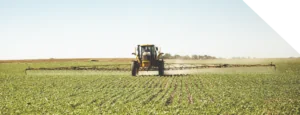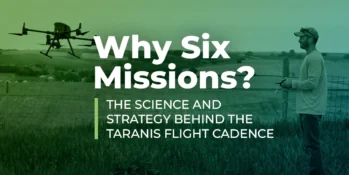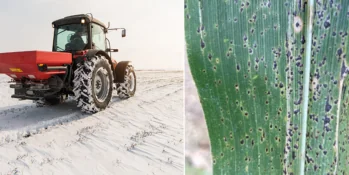

Taranis has always been about precision—detecting individual weeds with leaf-level clarity to help you act early and accurately. But sometimes, zooming in isn’t enough. You need to step back to see the full picture. That’s where Wide Angle Weeds comes in.
This new field-wide perspective works hand-in-hand with our ultra-detailed imagery to give you a more complete picture of weed pressure—zooming out to reveal spread patterns, pressure zones, and treatment impact across the entire acre.
Leaf-level detail is essential for identifying weed species and catching early pressure. But when you want to understand how escapes are spreading or how effective your herbicide plan has been, you need to see the full field.
Wide Angle Weeds adds that missing layer, helping you:
Assess the full extent of weed infestations
Identify pressure patterns and escape zones
Evaluate past applications and spot treatment gaps
It’s not about choosing one or the other. It’s about combining pinpoint accuracy and big-picture clarity.

More Accurate Heatmaps
Wide Angle Weeds adds broader visual data per acre, resulting in smarter, more representative weed heatmaps.
Greater Context for Action
Understand where pressure is heaviest, what areas can wait, and how to fine-tune your weed management strategy with confidence.
Less Guesswork, More Clarity
Wide Angle images show you what’s happening between zoom points—so you’re not working with blind spots.
Pro Tip: The top edge of wide angle images may not be tagged—and that’s by design. Weed detection is focused on the parts of the image with the highest likelihood of capturing clear, actionable weed presence. This approach enhances heatmap calibration and leads to better informed scouting decisions.
The Wide Angle view highlights full-field weed patterns, not just isolated escapes. It’s a powerful tool for spotting hot zones, planning proactive treatments and adjusting your strategy throughout the season. With Wide Angle Weeds, you get it all—because smart agronomy starts by seeing both the fine print and the big picture.


In-season crop scouting is critical—but let’s be honest, timing it right can be complicated. Growth stages don’t always follow the calendar.

As President Donald Trump begins another term in office, questions abound about the future of conservation funding under USDA programs like the Conservation Stewardship Program (CSP) and Environmental Quality Incentives Program (EQIP). While policy changes may eventually come, the good news is that funding opportunities for these programs remain open—for now.

Winter might seem like a time to take a breather, but for crop advisors and growers dealing with tar spot, it’s the perfect season to strategize for the future.